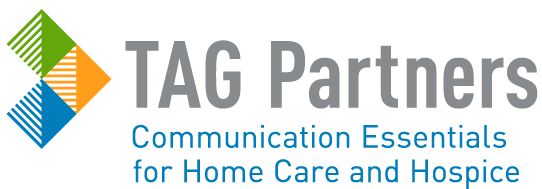The third and final part of our series on Marketing your CMS home health scores is a review of patient surveys. Patients and their families answer survey questions about their home health care experience. The HHCAHPS provides a national standard of comparison among home health agencies and an excellent marketing opportunity.
https://www.medicare.gov/homehealthcompare/search.html is an online consumer resource that gives your agency a recognized marketing platform. The best part is this tool is its absolutely FREE!
1. Patient survey summary star rating: The more stars the better! The HHCAHPS star rating is a summary of all the patient experience survey results. https://www.medicare.gov/homehealthcompare/About/Patient-Survey-Star-Ratings.html
2. How often the home health team gave care in a professional way? A lower score in this category is basically a poor staff review, and could indicate the need to educate staff on agency processes and expectations for providing quality care to patients. https://www.tagwebstore.com/caregiver-handbook.php (National Average 88%)
3. How well did the home health team communicate with patients? Communication is very important for success in many areas of home health care. A score below 85% is an indication that your training program needs to emphasize better communication. (National Average 85%) https://medlineplus.gov/ency/patientinstructions/000456.htm
4. Did the home health team discuss medicines, pain, and home safety with patients? Along the same lines as the previous question, medication education, pain evaluation, and patient safety at home are basics of home health care. A score below 80% on this question could indicate the need for more training, staff support, or staff evaluations to improve your score. (National Average 83%) https://www.ama-assn.org/residents-students/medical-school-life/6-simple-ways-master-patient-communication
5. How do patients rate the overall care from the home health agency? Home staffing is nearly impossible to supervise, but HHCAHPS is a direct reflection of your staff performance. You always want to see this rating in the 90% range! (National Average 84%) https://homehealthcahps.org/Portals/0/HHA_Responsibilities_List.pdf
6. Would patients recommend the home health agency to friends and family? This question is your money maker! You always want the majority of your patients to be willing to refer your agency! Failing here, is failing! (National Average 78%)
Reviewing your agency’s scores should be a routine part of your continuous improvement program. Superior patient care and satisfaction are both firm foundations to build your business on. Your above average scores can translate to referrals, and we offer a referral building tool to highlight them. Visit https://tagwebstore.com/ or call us at 866-232-6477 for more information on our Outcome Brochures and take the next step in successful home health physician marketing.
Resources: https://www.medicare.gov/homehealthcompare/About/Survey-Results.html , https://www.medicare.gov/homehealthcompare/About/What-Is-HHC.html




